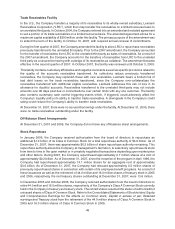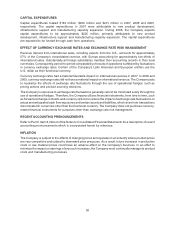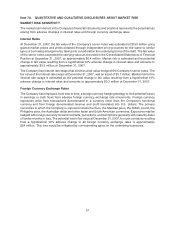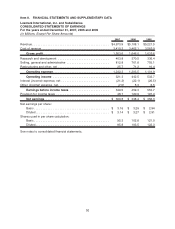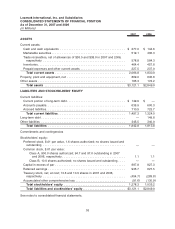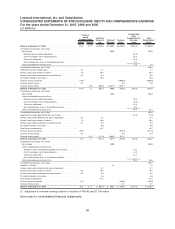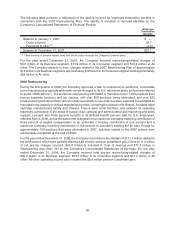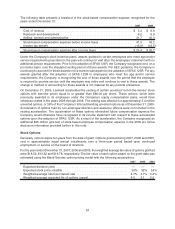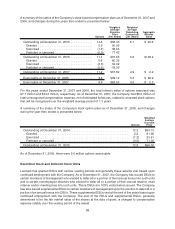Lexmark 2007 Annual Report Download - page 65
Download and view the complete annual report
Please find page 65 of the 2007 Lexmark annual report below. You can navigate through the pages in the report by either clicking on the pages listed below, or by using the keyword search tool below to find specific information within the annual report.
Lexmark records estimated reductions to revenue at the time of sale for customer programs and incentive
offerings including special pricing agreements, promotions and other volume-based incentives. Estimated
reductions in revenue are based upon historical trends and other known factors at the time of sale.
Lexmark also records estimated reductions to revenue for price protection, which it provides to
substantially all of its distributors and reseller customers.
Services
Revenue from support or maintenance contracts, including extended warranty programs, is recognized
ratably over the contractual period. Amounts invoiced to customers in excess of revenue recognized on
support or maintenance contracts are recorded as deferred revenue until the appropriate revenue
recognition criteria are met. Revenue for time and material contracts is recognized as the services are
performed.
Multiple Element Revenue Arrangements
Lexmark enters into transactions that include multiple elements, such as a combination of products and
services. Revenue for these arrangements is allocated to each element based on its relative fair value and
is recognized when the revenue recognition criteria for each element have been met. Relative fair value
may be determined by the price of an element if it were sold on a stand-alone basis (referred to as vendor
objective evidence (“VOE”)). In the absence of VOE, third party evidence (e.g., competitors’ prices of
comparable products or services) is used to determine relative fair value.
Research and Development Costs:
Lexmark engages in the design and development of new products and enhancements to its existing
products. The Company’s research and development activity is focused on laser and inkjet printers,
multifunction products (“MFPs”), and associated supplies, features and related technologies. The
Company expenses research and development costs when incurred.
Advertising Costs:
The Company expenses advertising costs when incurred. Advertising expense was approximately
$111.5 million, $98.7 million and $98.7 million, in 2007, 2006 and 2005, respectively.
Pension and Other Postretirement Plans:
The Company accounts for its defined benefit pension and other postretirement plans using actuarial
models. Liabilities are computed using the projected unit credit method. The objective under this method is
to expense each participant’s benefits under the plan as they accrue, taking into consideration future
salary increases and the plan’s benefit allocation formula. Thus, the total pension to which each participant
is expected to become entitled is broken down into units, each associated with a year of past or future
credited service.
The discount rate assumption for the pension and other postretirement benefit plan liabilities reflects the
rates at which the benefits could effectively be settled and are based on current investment yields of high-
quality fixed-income investments. The Company uses a yield-curve approach to determine the assumed
discount rate in the U.S. based on the timing of the cash flows of the expected future benefit payments. This
approach matches the plan’s cash flows to that of a yield curve that provides the equivalent yields on zero-
coupon corporate bonds for each maturity.
The Company’s assumed long-term rate of return on plan assets is based on long-term historical actual
return information, the mix of investments that comprise plan assets and future estimates of long-term
investment returns by reference to external sources. Differences between actual and expected asset
returns on equity investments are recognized in the calculation of net periodic benefit cost over five years.
59


